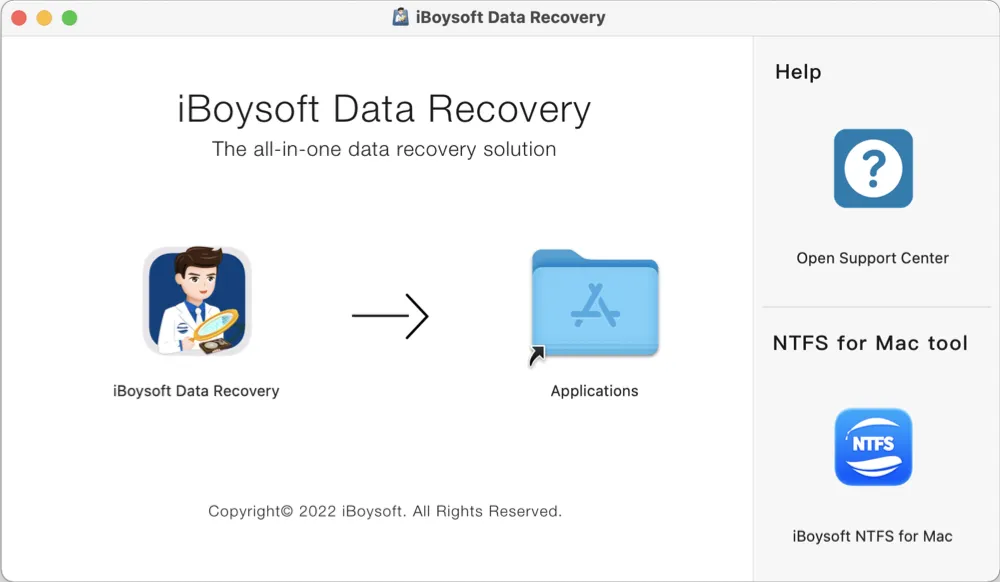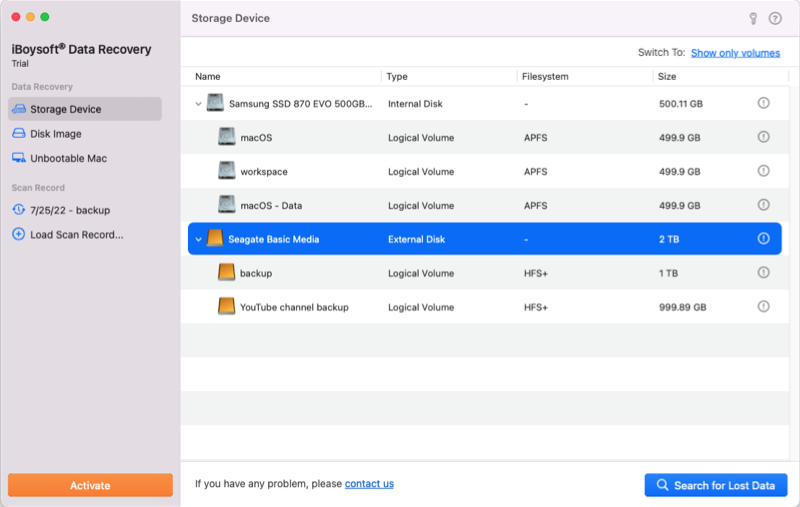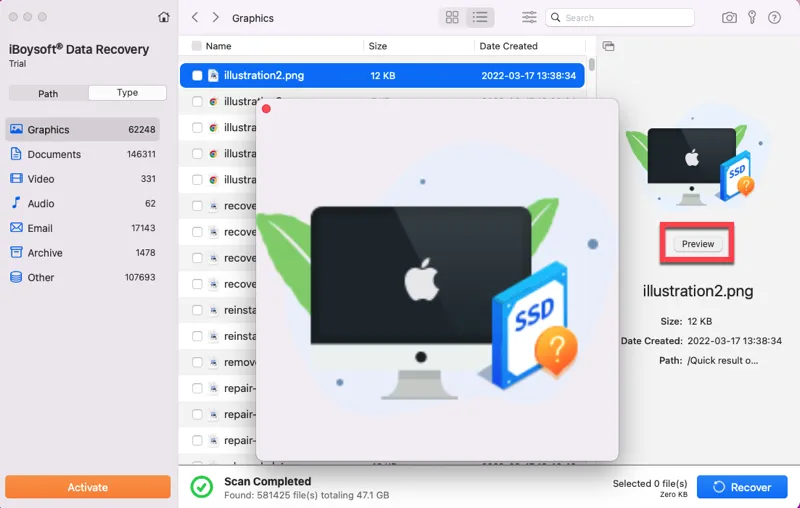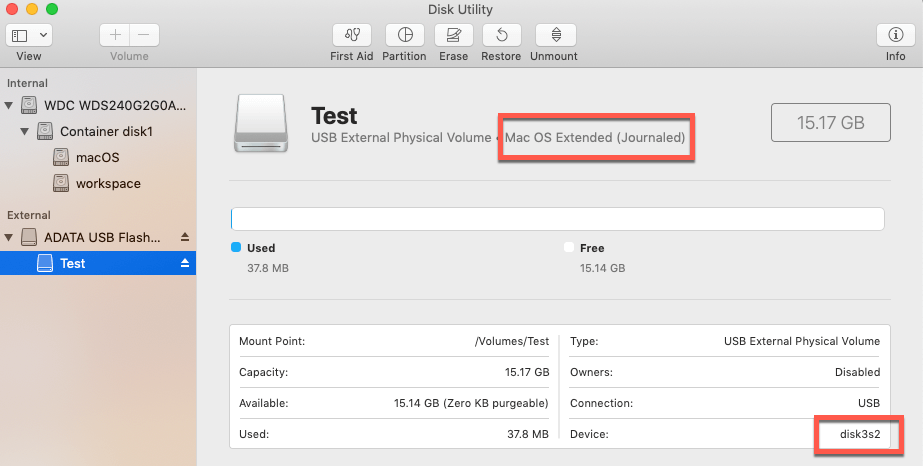Mac users like you already know that First Aid on Mac might help fix some disk problems when the disk is not working properly. However, it sometimes can fail to repair the disk. During the running of First Aid on an external hard drive, one of the following error messages may pop up indicating First Aid operation failure:
- "First Aid process has failed. If possible back up the data on this volume. Click Done to continue."
- Problems were found with the partition map which might prevent booting
- "First Aid could not unmount the volume for repair. Click Done to continue."
- "First Aid found corruption that needs to be repaired. To repair the startup volume, run First Aid from Recovery. Click Done to continue."
- File system verify or repair failed. : (-69845).
- Invalid B-tree node size.
- Couldn't mount disk.: (-69842).
Note: Only when you are using the external hard drive as a startup disk and running First Aid to repair it, you see the error message asking you to run First Aid from macOS Recovery.
Don't worry. This post will help you solve the First Aid not working problem and recover lost data from the troubled external hard drive. OK, without further ado, let's get started!
Recover data from external hard drive on Mac
iBoysoft Mac Data Recovery is a reliable data recovery software for Mac users. It is able to recover deleted or lost data from unreadable/unmountable/formatted/corrupted external hard drives. In addition to external hard drive data recovery, it is also a tool that supports USB flash drive data recovery, SD card data recovery, and so on.
Moreover, it is a data recovery tool for Mac that supports data recovery for encrypted APFS disks. This software is fully compatible with macOS 13/12/11/10.15/10.14/10.13/10.12 and OS X 10.11. and works fine on the M2, M1, M1 Pro, and M1 Max Mac.
Tutorial to recover data from corrupted external hard drive:
- Download and install iBoysoft Data Recovery for Mac on your computer, and then restart the Mac before you launch this software.

- Select the external hard drive that First Aid failed to repair and click Search for Lost Data. The program will start scanning this drive for recoverable files.

- Click Preview to check the found files after the scanning process finishes.

- Select what you want to get back and click Recover. Do not save the recovery results to the partition you scanned.
- Go through the recovered files and make sure all desired files are back.

Recover Files Disappeared from the External Hard Drive on the Mac
4 methods to recover disappeared/missing/deleted/lost files from USB external hard drives and SD memory cards on Mac computers with free Mac data recovery software. Read more >>
What does First Aid do in Disk Utility?
First Aid in Apple's Disk Utility is a small utility designed to verify and fix minor problems of a drive, such as repairing the drive's data structures, fixing external hard drives not mounting on Mac, and external hard drives not readable on Mac and so on. It has the capability to detect and repair the damages to partition map, master directory block, device driver, and so on.
But why did Disk Utility's First Aid would fail on external hard drives?
Most of the time, First Aid's failure on external hard drives is due to severe disk corruption which was brought about by improper ejection, physical damage, virus infection, or other reasons.
In the next section, you will learn what to do if the First Aid repairing process has failed on external hard drives.
How to fix the corrupted external hard drive on a Mac
Generally speaking, if you can't run First Aid on an external hard drive to repair it, the solutions left for you to repair the corrupted external hard drive on Mac are limited. We have concluded three methods for you to try one by one, hoping they can repair the corrupted external hard drive successfully without losing data.
Solution 1: Run First Aid one more time
On Apple's official Support page, users are encouraged to run First Aid more than once. First Aid will try to verify and fix the content on the selected volume every time. Therefore, there might be a hope that it works after you rerun it. If you are receiving a constant result saying the process has failed, you can move to the next solution.
Solution 2: Run the FSCK command from Single User Mode
FSCK (File System Consistency Check) is the Mac and Linux version of the CHKDSK command in Windows. It can check the file system and try to repair the damages it finds. FSCK command can be run to repair a boot disk or a non-boot disk. Therefore, if running First Aid on Macintosh HD failed or Macintosh HD could not be repaired in Disk Utility, you can also run FSCK command to repair the startup disk.
However, unlike the CHKDSK command in Windows, you can't run the FSCK command inside the operating system. You need to exit the operating system and reboot into Single User Mode.
Note: You won't be able to see this article when you are running the FSCK command, so we recommend you write down the steps below, especially the command lines for your convenience.
Follow the steps to fix the corrupted external hard drive using the FSCK command:
- Go to Disk Utility, select the corrupted external hard drive, and remember the file system and Device name. In the picture below, the file system is Mac OS Extended (HFS), and the Device name is disk3s2.

- Restart your computer and hold down the Command + S keys to boot into Single User Mode.
- Release the keys until you see white text appear on the startup screen.
- Wait until you see root#appears at the bottom of the text.
- Run the following command:
/sbin/fsck_hfs -fy/dev/disk3s2
6. Wait until the checking and repairing process is completed and run the reboot command.
Tips: Remember to replace "hfs" with the file system on your external hard disk. For example, type fsck_msdos for the FAT file system and type fsck_exfat for the exFAT file system. Remember to replace disk3s2 with the Device name of your external hard disk too.
Hopefully, the command has helped you fix file system errors on your external hard drive. If your external hard drive is still not working properly after you reconnect it to the Mac, proceed to the last solution.
Solution 3: Reformat the external hard drive
If you have encountered the First Aid operation failure when trying to fix external hard drives and neither of the solutions above works, the disk is probably severely corrupted. The simplest and most efficient way is to reformat the corrupted external hard drive to make it workable again.
To reformat a disk is to delete all files (including corrupted files), set up a file system and a partition table as well as repair or mark bad sectors. Those are the main factors that cause disk corruption, so reformatting a disk can solve almost all disk problems you may come across. But before that, you'd better back up as many files as possible to another drive, just as Disk Utility suggested.
However, you probably won't be able to back up your files directly from the seriously corrupted external hard drive. In this situation, data recovery software comes for help.
After recovering data from the corrupted external hard drive, it is time to reformat it:
- Go to Finder > Applications > Utilities > Disk Utility.
- Select the external hard drive and click Erase on the top toolbar.

- Provide the required details including a name, a format, and a scheme.
- Click on the Erase button.
- Wait until the process finishes.
If the external hard drive still doesn't work on the Mac after reformatting, the external hard drive may have been damaged physically. You have to send it to a local service center or replace it with a new one.
Conclusion
Disk Utility's First Aid repairing process doesn't fail on external hard drives only. It could happen to any external disks including pen drives, SD cards, memory sticks, etc. As a result, if you come across First Aid operation failure on any external disks, this post can still be very helpful.
- QCan a failed external hard drive be repaired?
-
A
It depends on what caused the failed external hard drive. If the external hard drive failed due to software problems such as file system corruption or soft bad sectors, it is possible to repair it and get it back to a workable state. However, if the failed external hard drive is physically damaged, you need to replace the hardware to see if it can be fixed.
- QCan you recover a failed external hard drive?
-
A
You can recover files from a failed external hard drive with the right data recovery tools or the help of professional data recovery services. The success chance of recovery varies according to how damaged your external hard disk is.
